|
DECEMBER 2021
|
|
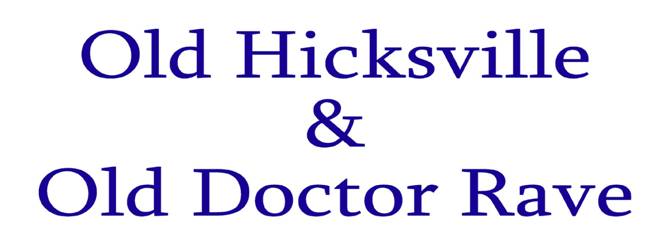
|
|

|
Hicksville flourished from the 1880s through
the 1910s, largely due to its prosperous and skilled German
immigrants. Among
them was Edward G. Rave, apothecary and doctor.
His day-to-day life offers insight into the years that
some regard as
Hicksville
's Golden Age.
|
Introduction
In 1866, Edward Rave - pronounced rahv·e - left his native Lower Saxony for the
United States
. He had concluded his
studies at Georg August Universität,
famous for its research into the medicinal use of plants.
Now he settled in
New Jersey
, so that he could further his medical studies across the
Hudson
at NYU, while working as an apothecary. After he earned his Doctorate in
1877, he and his family relocated to
Hicksville
, where he would practice both as a doctor and an apothecary.
As time went by, his apothecary shop would become
Hicksville
's Union Drug Store, and he
would eventually be known as "Old Doctor Rave,"
for there was now a "Young Dr. Rave," Edward's son Adolph G. Rave.
|
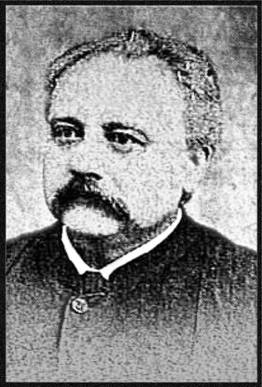
|
|
Dr.
Edward G. Rave
Huntington
Long-Islander, July 27, 1917
|
"Dedicated small town doctor" was
only one of the many roles he played, for his professional
qualifications were extensive, and he was in demand.
This list of Dr. Rave's affiliations and appointed posts is
likely incomplete:
|
▪
|
Health Officer, Town of
Oyster Bay
(Southern District)
|
|
▪
|
Chief Physician and Surgeon,
Long Island
Railroad
|
|
▪
|
Member, National Association of
Railroad Surgeons
|
|
▪
|
Consulting Doctor, St. Mary's
Hospital
,
Jamaica
|
|
▪
|
Fellow,
New York
Obstetric Society
|
|
▪
|
Professor of Obstetrics,
NYU
Post-Graduate
School
and Hospital
|
|
▪
|
Commissioner in Lunacy*
|
|
▪
|
Member,
New York
State
Society of Medical Jurisprudence
|
|
▪
|
Vice-President, German Medical
Society
|
|
▪
|
Member,
New York
State
Medical Pharmaceutical Association
|
|
▪
|
Vice-President,
College
of
Brooklyn
Pharmacy Association**
|
*
It is not clear from the sources I
have found whether this position relates to the
New York
State
Commission in Lunacy, or to another organization that was mandated to
improve the conditions in which mental patients lived.
** Note that
Dr. Rave kept a botanical garden at his home in
Hicksville
, in which he grew medicinal plants.
Students and members of the Pharmacy Association were welcome to
visit the garden and learn-first hand about growing the plants they
would use in making some of their medicines.
|
Apothecaries or Pharmacists?
When we think of pharmacists, we
picture trained, licensed professionals who are authorized to
dispense medicines prescribed by doctors.
They are able to advise us on potential conflicts among
the medications (both prescribed and over-the-counter) which we
take. That picture
was not necessarily accurate in
America
for much of the nineteenth century.
At that time, no license or training was required to sell
drugs, or to call yourself a pharmacist.
However, there also were
apothecaries - people who had studied, often in German
schools, the scientific use of plants to make medicines.
They shared their experiences and research through
professional associations (e.g., in the second half of the
nineteenth century,
New York City
alone had multiple German apothecary societies).
Through these associations, apothecaries learned about
standard medications which reliably treated given ailments.
At first, American pharmacists (the
real ones, not the "pretenders" who just sold drugs and
snake oil) were disadvantaged - the
U.S.
had no centuries-old universities or professional organizations
to guide them. But
by the late 1800s, the apothecaries and pharmacists were merging
into one licensed profession.
Thus, E.G Rave's Apothecary gave way to his Drug
Store, which later became the Pharmacy
of another son, Albert. C. Rave:

A.C.
Rave's Pharmacy, formerly E. G. Rave's Union Drug
Store, northwest corner of Nicholai Street and Broadway;
part of the E. G. Rave home is visible on the right
""digitally
restored" version of online image found in the
Hicksville Public Library Collection at nyheritage.org
The
large lettering on the sign appears to read "Pharmacist
and Chemist." This
picture must date no earlier than 1906,
as in October 1905, contractor Charles Voigt had just finished
erecting the newest thing in storefronts: plate glass windows.
|
E.G. Rave's entries in the annual Graduate Directory of NYU Medical list him as an
Allopath - someone who used scientific, evidence-based treatments
- rather than a Homeopath.
He regularly studied developments in both American and German
medical literature. When the
need was acute, and standard treatment failed, he could be an early
adopter of new treatments, as described below:
|
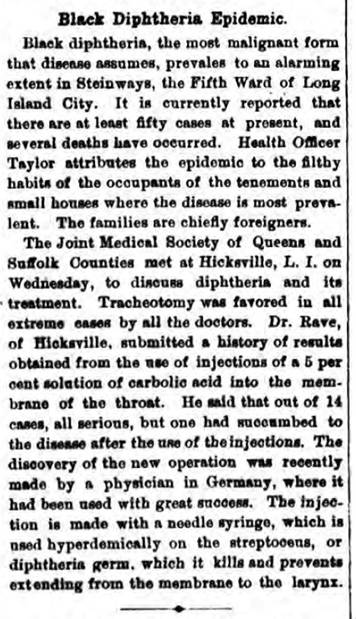
|
|
Ironically,
the lives of the "foreigners" who were sick
due to their "filthy habits" were saved by an immigrant.
Yonkers
Statesman, June 14, 1889
|
|
CAUTION:
DO NOT ATTEMPT THIS AT HOME.
INGESTING OR INJECTING CARBOLIC ACID CAN CAUSE SERIOUS
AND IRREVERSIBLE ORGAN DAMAGE.
THE
TREATMENT COULD ONLY HAVE BEEN SAFELY INJECTED INTO A VERY
SPECIFIC AREA OF THE THROAT.
WE DO NOT KNOW THE DOSAGE ADMINISTERED.
|
With all the spare time he had on his hands☺,
Edward Rave was able to belong to many non-medical organizations.
He was an active Mason and Knight Templar, and an Odd Fellow.
He served as President of the Board of Education.
He was active in the local chapter of the Royal Arcanum, and he
was one of the founders of
Hicksville
's Citizens Protection Association.
When
Nassau
County
split away from
Queens
, he participated in the discussions that led to the choice of the new
County Seat.
One aspect of the era's stereotype of German
immigrants was that they loved music, and that definitely was true of
Dr. Rave. He was part of,
and at times headed, the Hicksville
Sängerrunde, a traditional German male choral society.
Among the many places at which it performed was Sagamore Hill,
where in 1908 its members (including Dr. Rave) sang for and met
President Theodore Roosevelt. More
information about the local Sängerrunde, including the names of the
Hicksvillians who sang for President Roosevelt, appears in the Appendix
to this article.
|
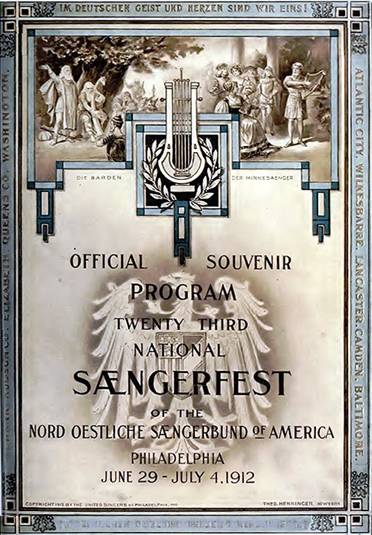
|
|
Although
not affiliated with the national Sængerbund,
the
Hicksville
Sängerrunde performed as an
independent group at
this six-day event.
|
Rave
also headed The United Singers of
Nassau County, a group of seventy men from Hempstead, Hicksville,
and
Rockville Centre
, which gave concerts of American as well as German songs.
In 1912, it performed at the annual Mineola Fair.
Life in
Hicksville
, as Experienced by a Village Doctor
Today, it may seem like
Hicksville
's Golden Age, but one
wonders if Edward Rave thought that at the time.
He spent most his work time far from elegance and beauty, for
every day he tended to the needs of the working people, the elderly, and
perhaps the indigent. We do
not have logs of his appointments and emergency calls, but from
scattered articles in old newspapers, we can learn a fair bit about
village life in this era. It
will not be a complete picture, but rather a mosaic, with plenty of
tiles now missing.
Some of the news items we discover may at first seem insignificant.
For example, Brooklyn Life regularly tracked the spread of the automobile across
Long Island
, and in the third week of May, 1910, it told its readers that Edward G.
Rave, M.D. had registered his Maxwell.
(Yes, fellow old-timers, that is the kind of automobile that Eddie '
Rochester
'
Anderson
hypothetically drove for too many years on behalf of Jack Benny.)
|

|
|
Advertisement
for 1909 Maxwell D-A
Digital.Library@Villanova.edu
|
Starting any car of the era meant hand-cranking it,
and driving it was arduous - power steering would not be invented
until the 1950s. Edward Rave
was 66 years old in 1910. After
each visit, he had to crank up the Maxwell again, and wrangle it to
wherever the next patient was. Frequently
called to consult on difficult cases, he often drove to Queens, or
Suffolk
. Being a doctor in this
particular Golden Age took
determination and stamina.
Note that many
Long Island
newspapers printed earlier than, say, 1885 either have not survived, or
are not available online. Here
are some glimpses of Long Island life as Edward Rave knew it, starting
with 1888:
In July 1888, Dr. Rave and his wife returned to
Europe
for a vacation. Among the
things they did there was go to
Carlsbad
for the mineral baths. During
their absence, his young assistant, Dr. Taliaferro (who would soon have
his own local practice) looked after Dr. Rave's patients.
In December 1888, Dr. Rave was called to Breslau (now
Lindenhurst
). The horse-drawn stage
coach that ran between
Hicksville
and the south shore had overturned, badly injuring five people.
He would travel there repeatedly for more than a week, continuing
to treat the most seriously injured.
A few months later, the newspaper announced that Dr. Rave was importing
clean cotton from
Germany
, for local doctors who needed it to staunch blood during surgeries.
Not long after that,
Hicksville
and the surrounding area were hit by simultaneous waves of scarlet fever
and diphtheria. The
newspapers commented on how busy Dr. Rave was in consequence, mentioning
his great success in treating the latter.
In June of 1891, in his capacity as LIRR surgeon, Dr. Rave was called a
short distance to his hometown depot, where a freight train awaited him.
Some miles back, a crew member had been partially scalped by a
malfunctioning lever on a track switch; the train hurried to
Hicksville
to get Dr. Rave's help as soon as possible.
Fortunately, he was able to reattach the man's scalp.
That July - and probably in every July - he set many broken limbs
and sprains, because young people climbed trees to pick ripe cherries,
slipped, and fell to the ground all over Hicksville and Plainview.
That year,
Hicksville
also saw a spate of feverish young boys' passing out for hours at a
time in the summer heat. The
likely cause was said to be their feasting on unwashed cherries, and
drinking lots of nearby stagnant water.
By 1894, Rave's Union Drug Store
was offering smallpox vaccinations for infants on every Tuesday.
Just before Easter 1895, Rave was summoned to
Bellmore
, to treat an attempted suicide. A
man had both taken poison and shot himself in the head, but he had
survived. Dr. Rave
successfully removed the bullet from the man's brain.
I have found no report on the attempt's long-term effect upon
the unfortunate man.
The following month, the Union
Drug Store opened its soda fountain for its second season.
|

|
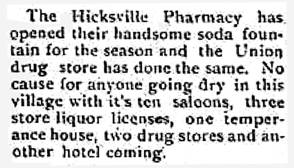
|
|
Huntington
Long-Islander, May 16, 1894
|
Huntington
Long-Islander, May 24, 1895
|
Frankly,
I am not certain why a soda fountain could not open until the nearby
ponds were thawing. Could it
be that local spring water was offered as refreshment?
|
Thus
far, we have learned some things about life in old Hicksville.
Because the LIRR did not directly link Hicksville to
either shore, the village was still served by a stage coach that
went north and south. Kids
were kids even back then, and sometimes they did stupid things.
Nineteenth century medicine had limitations and
strengths. Soda
fountains were a new fad. All
of these things seem perfectly ordinary.
Also ordinary, but nonetheless disturbing, were the problems of
the age, which were as rampant and serious in Hicksville as they
were anywhere. Due
to rail and farm accidents, serious wounds and loss of limbs
were commonplace - yet before Dr. Rave took action, clean
bandage material apparently was not readily available in the
village. Attempted
and completed suicides were not rare; most weekly editions of
the Long-Islander newspaper reported one's having occurred in
the area.
I am not suggesting that the village was a bad place at this time.
Rather, I mean to point out that the era that some call
its Golden Age was not especially golden for the majority of
Hicksvillians. To
them, it was just an Ordinary Age.
|
Let's look now at some of the more
gripping news items that mention Edward Rave:
In February 1896, during a sustained period of frigid weather, the
Town's Overseer of the Poor
told Dr. Rave to check on two elderly siblings who had not been seen
around Hicksville for some time. In
their unheated cabin, the doctor found a man who sat next to a stove
without fuel, in a kitchen without food.
Upstairs lay the body of the man's sister, literally frozen
solid. Her brother refused
to let anyone else into the cabin, and he refused to leave, not wanting
to abandon his deceased sister's body.
The next winter brought a similar call.
A homeless woman, in her twenties, had lain down next to a road
and fallen asleep. She froze
to death.
In August 1902, he went to check on a young mother.
Her three little children were waiting for her to awaken, and the
youngest cuddled close against her.
Alas, she had starved to death, at the age of thirty-two.
In 1897, Dr. Rave, his family, and
some of their neighbors endured a horrible experience.
|
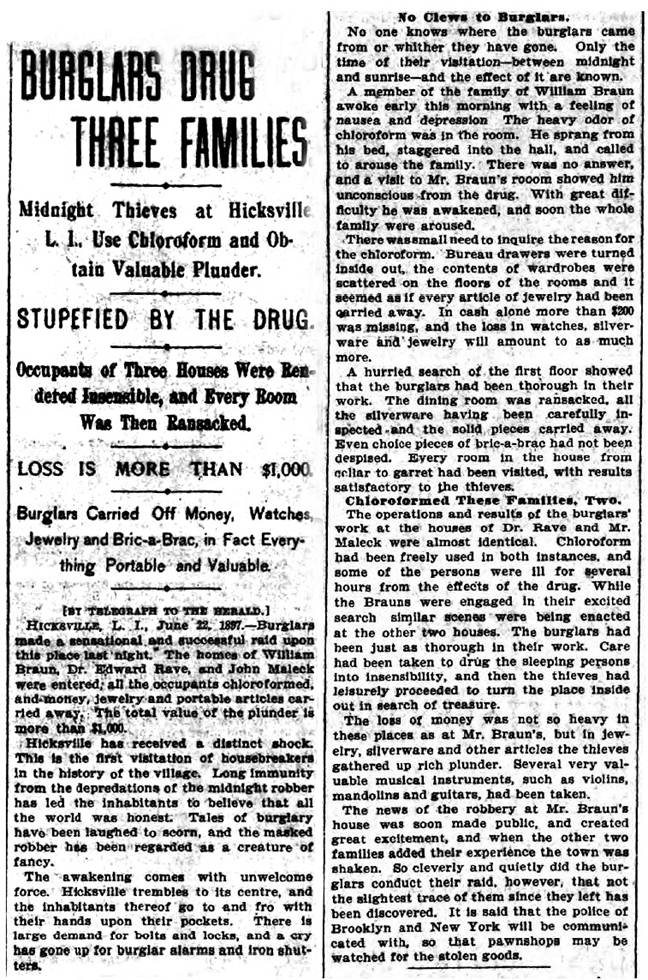
|
|
New
York Herald, June 23, 1897
|
|
*
|
By 1900, bicycling was, to use 21st
century lingo, definitely trending.
One June night, a number of young cyclists were racing down
Broadway in the dark. None
of them used lights or sounded warning bells, as required after dark by
local ordinance. They did
not slow as they approached Manetto Hill Road (now Old Country Road).
As they raced across it, six of them were struck sideways by a
horse-drawn cart. One of the
cart's shafts - a pole that juts forward from a cart, to which the
horse's harness is attached - impaled one of the cyclists. The
cart's driver quickly fetched Dr. Rave, but the young man had already
died. The cart driver was
exonerated, and the surviving cyclists were assessed fines.
During 1901's quail hunting season, Edward Rave was called to tend to
a hunter, shot when a hunting companion tripped and accidentally
discharged his gun. The man
had died instantly. I must
note that this was a fairly regular occurrence; even Young Doctor Rave
once wounded a friend while climbing over a fence in search of game.
In 1902, the Southern New York Volunteer Firemens Association held its annual
convention in Hicksville. Arriving delegates at the railroad station
were so excited that they rushed forward, accidentally pushing a
visiting Deputy Chief in front of the departing train.
Both his legs were severed - and no one in the crowd
administered first aid. The
man sat in shock, staring ahead blankly, and expired just as Dr. Rave
arrived to try to save him.
One June day in 1908, physicians from
surrounding towns, including both of Hicksville's Drs. Rave, were
called to the site of a collision southwest of Hicksville.
Two autos had been racing along Bethpage Turnpike.
One kicked up so much dust behind it that its competitor could
not be seen by other traffic. An
approaching car drove into the dust cloud, colliding with it head-on.
One person died; six others sustained serious injuries.
The other car in the race just kept going.
|
These events make Hicksville seem a darker place.
Even with an Overseer of the Poor, people regularly
starved and froze to death.
The chloroform incident left the victims, and for that
matter, most townspeople, terrified.
Thoughtless and reckless behavior abounded, often with
gruesome and fatal consequences.
I do not mention these events to demean Hicksville - but when we
wax nostalgic for the past, we sometimes need to be reminded
that life then was complex, and at times far from
picture-perfect.
|
Conclusion
Early in 1915, Old Doctor Rave
resigned as Town Health Officer. He was
71 then, and the Long-Islander
took the opportunity to thank him for all he had done during his nearly
four decades of service to Hicksville.
It was clear that he soon would also step back from his other
duties, and thereafter be content to watch the efforts of a new
generation of doctors. He
died eighteen months later.
A few years ago, I stood in Plainlawn Cemetery, gazing at the impressive
older grave markers, at first not seeing some of the names I had
expected to find. As I took
a few steps to try a different vantage point, I felt something hard
beneath my foot. It was a
small, flat rectangular stone, its edges overgrown by grass, large
enough for only eight carved letters: DR.
E.G. RAVE.
Compared to the elaborate markers I had been looking over, Edward
Rave's is incredibly modest. It
is, in its way, perfect for the grave of a dedicated man, someone who
strove not to aggrandize himself, but to be the best doctor possible for
all who needed him.
Appendix:
Odds and Ends about the Hicksville Sängerrunde
The names of those who sang at
Sagamore Hill are listed in the penultimate paragraph of the following
excerpt.
|
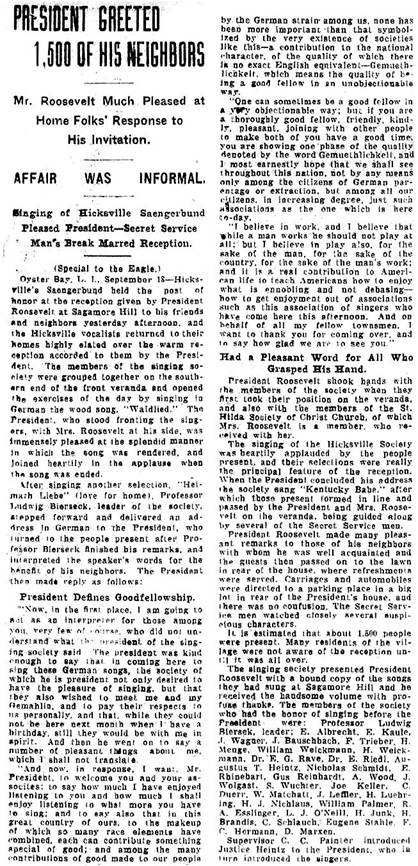
|
|
The
Brooklyn Daily Eagle, September 18, 1908
|
FYI, the remainder of the article, not
shown here, deals with a complaint made by an attendee that the Town
Supervisor had "jostled" her while trying to get into the event.
Zeal to preserve history can sometimes lead to careless errors.
When I find that such an error - even my own - is relevant to
Ancient
Hixtory, I
take a moment to tell readers about it.
This photograph of the Sängerrunde is found online in the Hicksville Public Library Collection at NYS Digital Images. Unfortunately,
the text which accompanies it identifies these men as "Staehle's
Brewery Singers." In
addition, like several other pictures in the online collection, this one
was erroneously scanned as a mirror image of the original.
|
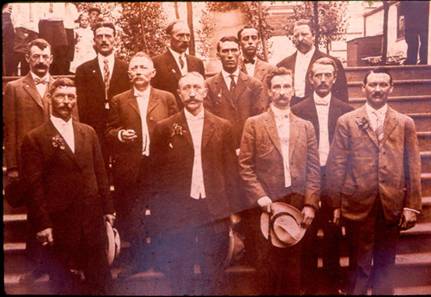
|
|
Staehle's
Brewery Singers - not!
The Hicksville Sängerrunde
Don't
be misled by the fellow on the right; his jacket's "button
side"
is in front of its "button-hole" side.
A look at the other men shows
clearly show that their jacket buttons all appear to be on the
wrong
side. Hence, this
must be a mirror image of the original photograph.
Hicksville
Public Library Historic Photographs
at nyheritage.org
|
We can see the picture in its correct
orientation in Richard and Anne Evers' book about Hicksville.
|
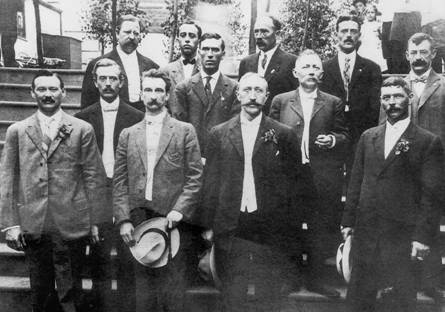
|
|
Sängerrunde,
or at least some of it; date unknown
|
Seven of the men here who were
identified by the Evers had no
connection to the Staehle Brewery. One
of the others is Eugene Staehle, the proprietor of the Brewery Hotel.
His presence may explain why the society was able to use his
hotel space for rehearsals, but it certainly does not imply that this
group was "Staehle's Brewery Singers."
Incidentally, the society's musical director, Ludwig Birseck,
was not a Hicksvillian. He
was a professional music teacher who lived in Queens, and presumably had
been hired by the Sängerrunde.
Although the Evers' book says the singing society was "active from
1900 to 1910," its roots go further back.
The Queens County Sentinel
for May 20, 1875 announced that the Hicksville Sangerunde [sic] was
going to have its second annual concert in the New Cassel Woods on June
7, 1875. We live and learn.
Well,
that's about it.
I wish you all a healthy
and
joyous December!
|












